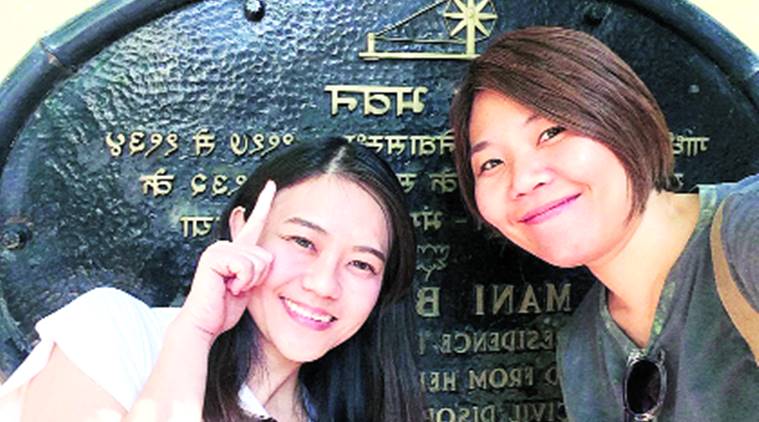Stay updated with the latest - Click here to follow us on Instagram
Mani Bhavan: Archiving the life of Mahatma Gandhi
A room on the second floor, which used to be Gandhiji’s living room and working space, has been preserved as far as possible in its original setting.
 (R) Somsuda Piamsumrit with her sister at Mani Bhavan. (Express Photo)
(R) Somsuda Piamsumrit with her sister at Mani Bhavan. (Express Photo)
Amidst the tranquil Gamdevi neighbourhood stands a two-storey bungalow, Mani Bhavan. It was not only the headquarters of the Indian National Congress from 1917 to 1934 but also the place from where the first phase of Mahatma Gandhi’s call for non-violence was launched. The structure not only holds a significant part of India’s freedom struggle but is a momentous address in the city’s history, archiving the life of Mahatma Gandhi.
Watch What Else Is Making News
The building belonged to Revashankar Jhaveri, a follower of Gandhi, who hosted him every time he was in the then Bombay. The satyagraha against the Rowlatt Act, which gave the British the power to imprison political leaders without trial, and the decision to launch the civil disobedience movement began at Mani Bhavan.
It was after Gandhi’s death in 1948 that the Bhavan was turned into a museum and it is now a Grade I heritage structure. Tourists, mainly foreigners, are drawn to Gandhi’s Bombay home.
“We know him because it is Gandhi, which is like general knowledge,” said a senior British national touring Mumbai with his wife.
Today, as one enters the building, multi-coloured pamphlets in at least 10 languages from all over the world can be seen on a glass panel, which also has books written by Gandhi, including his autobiography, My Experiments with Truth.
Inside, a wall has details of postage stamps of different countries, which have commemorated Gandhi through them. On the other side is a library with around 40,000 books and more than 300 members, apart from those who frequent the library, refer to the books on Gandhi.
On the first floor are photographs of various important events of his life. It has a small auditorium where films on Gandhiji are shown from time to time and recordings of his speeches are played on request. There is space for holding meetings, seminars, discussions and various competitions for school and college students, arranged by the Gandhi Study Circle.
The staircase leading the visitors to the upper floors are dotted with Gandhi’s pictures depicting his life, and photographs of his childhood till his assassination are displayed along with press clippings.
A room on the second floor, which used to be Gandhiji’s living room and working space, has been preserved as far as possible in its original setting. The room has a few charkhas. This is the place where Gandhi learnt to make slivers for spinning cotton yarn.
On the second floor, a silent, dimly lit room chronicles Gandhi’s main moments through small figures placed in a case. Though it appears to explain the context of the years and the event through all the elements used, a few visitors believe that more effort could be made to explain aspects of Gandhi’s history.
“My visit made me think a lot but more could have been done in terms of display. This is not as appealing as we thought it would be. Too much reading. An experience for anyone needs to be a little more interactive even with the history displayed,” said Somsuda Piamsumrit, a Thailand national, who is museum curator in Bangkok.
Near the entrance the caretakers sell Gandhi postage stamps, photographs, Gandhian literature, statues and even medallions. Mani Bhavan is considered as a Research Institute in Gandhian thought and Rural Development for post-graduate students.







